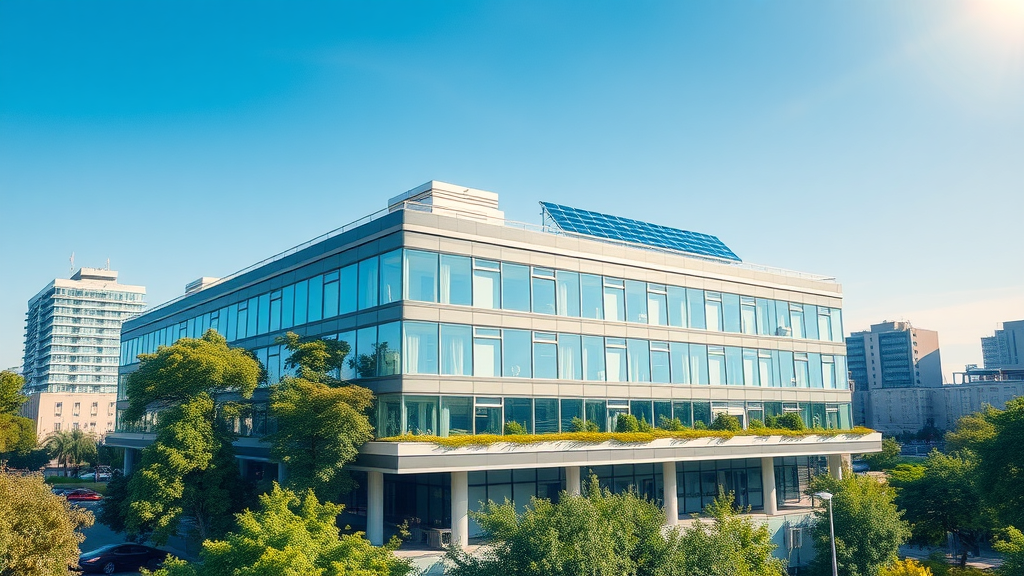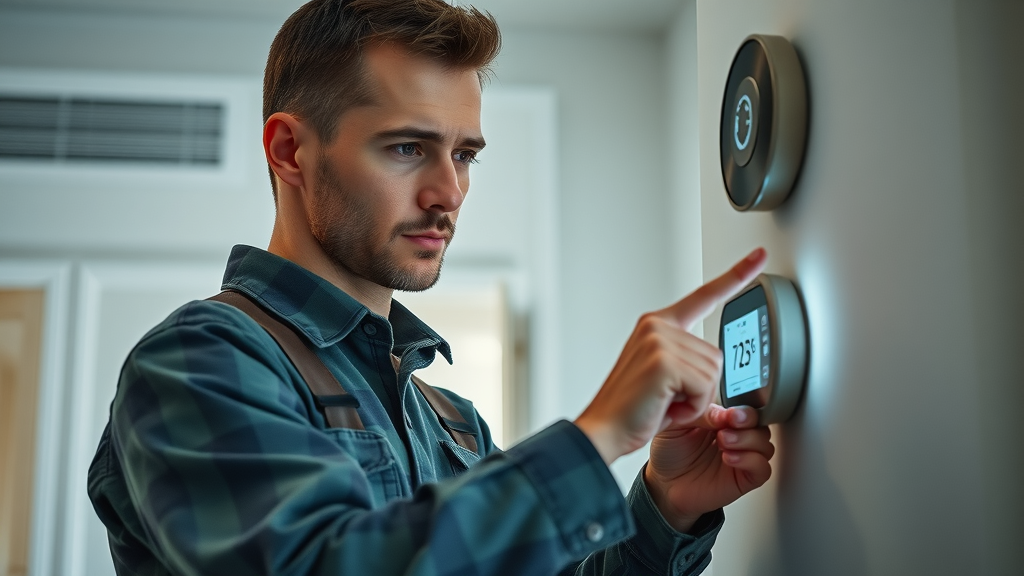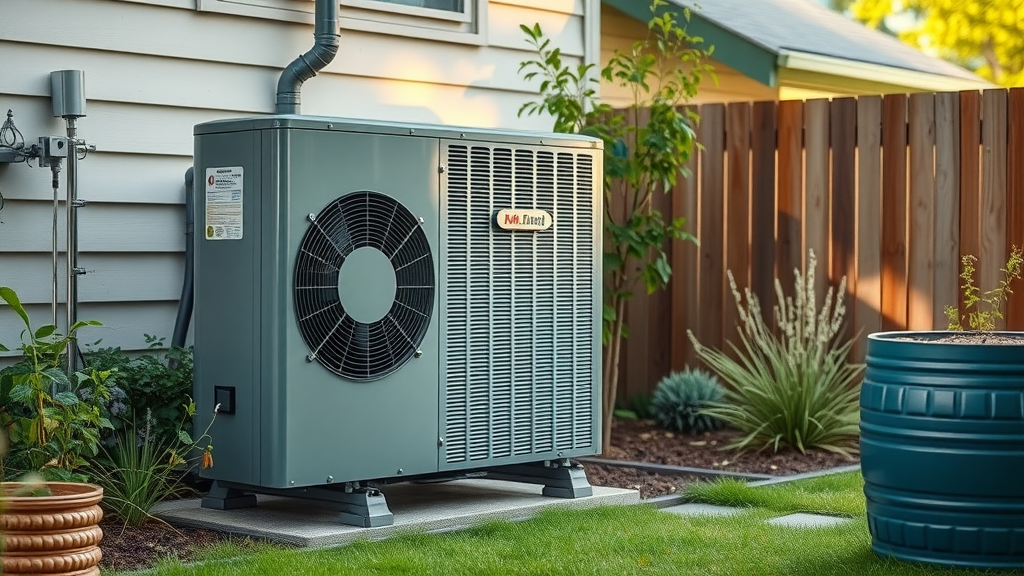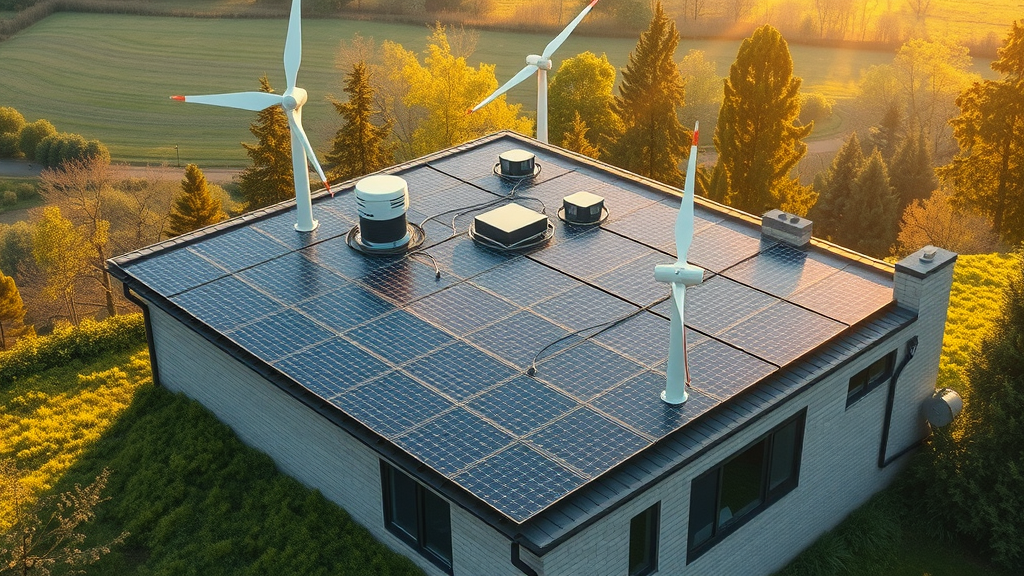Did you know that HVAC systems account for nearly 40% of total building energy use ? The air you breathe and the comfort in your home or office come at the surprising cost of high energy consumption. But thanks to sustainable HVAC innovations , the future of climate control is taking a leap into greener, smarter, and more efficient territory. Discover how the latest technology is not just revolutionizing indoor comfort—but also reshaping the HVAC industry for a cleaner, healthier planet.

Did You Know? HVAC Systems Account for Nearly 40% of Total Building Energy Use
The staggering figure that HVAC systems make up nearly 40% of a building’s total energy use highlights just how critical efficiency is in the built environment. Traditional hvac systems are major contributors to global energy consumption and greenhouse gas emissions—issues that directly impact both costs for building owners and our global environmental health. As the hvac industry adapts to rising demand for eco-friendly solutions, innovative systems are emerging that dramatically reduce energy use without sacrificing comfort.
The next generation of sustainable HVAC innovations is aiming squarely at lowering operational costs and shrinking the carbon footprint of commercial and residential buildings. Key developments include smart tech platforms, ultra-efficient heat pump technology, and systems that seamlessly integrate renewable energy like solar and wind. By choosing greener hvac solutions , businesses and homeowners are not just reducing energy bills—they’re helping tackle climate change and ensuring reliable comfort for years to come.
Understanding the Impact of Sustainable HVAC Innovations on the Environment
The environmental impact of outdated hvac technologies is hard to ignore. Traditional systems rely on high energy consumption and often use refrigerants with high global warming potential (GWP), which contribute significantly to climate change. However, modern sustainable HVAC solutions incorporate advanced features like smart hvac controls and low-GWP refrigerants, tackling these issues head-on.
By leveraging technology such as predictive maintenance and smart sensors, these hvac systems minimize inefficiencies and lower emissions. The adoption of heat pump and heat recovery systems represents a commitment to drastically reducing the environmental impact of heating and cooling—often resulting in fewer greenhouse gases released into the atmosphere and supporting global efforts to slow climate change. As these sustainable practices become the industry standard, our collective carbon footprint is set to shrink in the coming decade.
What Makes Sustainable HVAC Innovations So Crucial for the HVAC Industry?

The HVAC industry is undergoing a revolution fueled by environmental challenges and a growing demand for cost-effective, reliable comfort. The urgency of combating climate change has pushed manufacturers and property owners to seek green building solutions that prioritize energy efficiency and minimize environmental impact. Sustainable HVAC innovations sit at the heart of this shift, enabling companies to deliver comfort without compromising the planet’s well-being.
With renewable energy integration, data-driven management systems, and technologies like smart tech and advanced management systems , the industry can now deliver unparalleled indoor comfort at a fraction of yesterday’s energy cost. Such developments not only address stricter regulatory standards but also help future-proof investments for building owners. When sustainability meets smart management, everyone wins—from improving indoor air quality to optimizing performance and maximizing long-term savings.
Climate Change Challenges and the Push for Greener HVAC Systems
As climate change intensifies, the responsibility to reduce emissions and lower energy consumption falls heavily on the hvac industry . Traditional air conditioning systems and outdated technologies have become symbols of waste, both in electricity usage and refrigerant emissions. Fortunately, green HVAC solutions offer practical ways to cut carbon, leveraging renewable energy and cutting-edge heat pumps to deliver robust climate control with a softer environmental footprint.
The integration of smart management systems and energy optimization algorithms allows new hvac systems to adapt in real time, minimizing unnecessary energy use while maintaining optimal indoor conditions. With governments mandating stricter energy standards and more consumers aware of their ecological impact, the push for sustainable hvac innovations is not only a trend—it's a necessity for survival and growth within the evolving HVAC landscape.
- Dramatic reductions in emissions with energy efficiency upgrades
- How renewable energy is reshaping hvac solutions
- Importance of smart tech and smart hvac advancements
- Improving indoor air quality with the latest management systems
- Future outlook for the hvac industry in sustainable practices
Revolutionary HVAC System Upgrades Shaping the Future of HVAC
From intelligent automation to eco-friendly refrigerants, the latest sustainable HVAC innovations are rewriting the rules for energy-efficient comfort. Smart hvac technologies now empower facilities to monitor and adjust climate parameters remotely, harness predictive maintenance tools, and operate more reliably—reducing system downtime and operational costs. As the future of hvac comes into sharper focus, expect smarter controls and sustainable upgrades to become the baseline rather than the exception.
These innovations also extend to occupant health and wellness. Modern hvac systems support advanced air filtration and sensor-driven ventilation, reducing allergens and ensuring consistently high indoor air quality . For property owners, investing in new technologies means not only contributing to a healthier planet but also enhancing building value and appeal in today’s climate-conscious market.
Smart HVAC Tech: Remote Management, Predictive Maintenance, and Control
The rise of smart tech in the hvac industry has opened the door for real-time adjustments and immediate issue detection. With intuitive apps and cloud-based management systems , properties of any size can achieve precise temperature control, identify inefficiencies, and schedule necessary repairs—all from a smartphone or control panel. This level of connectivity also boosts energy efficiency and can extend the operational life of HVAC equipment.
Predictive maintenance harnesses the power of AI and data analytics to sense and correct potential breakdowns before they cause costly failures. Not only does this mean fewer emergency repairs, but it also supports consistent air quality and energy performance. Ultimately, these advancements translate into lower operational costs, a reduction in wasted resources, and improved comfort indoors.
Heat Pump & Heat Recovery: Advances in High-Performance Systems
High-performance heat pump and heat recovery technologies are setting new benchmarks for efficiency in both heating and cooling applications. By extracting heat from the air, ground, or water and transferring it where it’s needed, these hvac solutions drastically reduce reliance on fossil fuels. Whether retrofitting older buildings or implementing in new construction, state-of-the-art heat pumps offer substantial savings and superior comfort.
Heat recovery systems capture “waste” heat from exhaust air and repurpose it to precondition incoming fresh air. This process not only saves energy but also ensures healthier indoor air by improving overall ventilation. As building codes become stricter and demand for energy efficiency grows, expect to see widespread adoption of these sustainable HVAC features in homes, offices, and even data centers.

"Energy efficiency is not just a buzzword—it's a necessary transformation for the HVAC industry to ensure sustainability and resilience against climate change."
How Heat Pumps and HVAC Solutions Power Energy Efficiency
Heat pump technology is revolutionizing the way we approach energy consumption in buildings. These systems deliver both heating and cooling more efficiently than conventional air conditioning or boilers, making them a linchpin of sustainable HVAC design. By minimizing direct fossil fuel use and maximizing comfort year-round, heat pumps play a key role in meeting stricter energy codes and achieving net-zero emissions targets.
What makes heat pumps especially attractive is their adaptability. Innovations in inverter technology enable these systems to adjust output in real-time, responding to both occupancy and ambient conditions. Combined with management system controls and smart thermostats, property owners can further optimize energy use, reduce standby losses, and contribute to a greener grid.
Types of Heat Pumps: Air, Ground, and Water Source
- Air Source Heat Pumps: The most common and easiest to retrofit, these units extract heat from outside air—even in cold conditions—and transfer it inside efficiently.
- Ground Source (Geothermal) Heat Pumps: These leverage the stable temperatures underground, offering higher efficiency and consistent performance throughout the year.
- Water Source Heat Pumps: Used when a nearby water source is available, these systems tap into the thermal properties of lakes or wells, providing reliable and efficient heating and cooling for larger facilities or campuses.
Each heat pump type has unique advantages in different environments, but all contribute to lower energy consumption, improved air quality , and a reduced carbon footprint. As efficiency and affordability increase, expect these systems to become the standard across both residential and commercial sectors.
Comparison Table: Traditional HVAC vs. Sustainable HVAC Innovations
| Feature | Traditional HVAC | Sustainable HVAC Innovations |
|---|---|---|
| Energy Efficiency | Low to Moderate | High (30-60% reduction in energy use) |
| Renewable Energy Integration | Rare or None | Common (solar, wind, geothermal) |
| Indoor Air Quality | Standard Filtration | Advanced air quality management & sensors |
| Maintenance | Reactive, often expensive | Predictive maintenance enabled by smart tech |
| Cost Over Time | High operational costs | Lower lifecycle and operational costs |
Integrating Renewable Energy Into HVAC Systems for a Greener Tomorrow

Integrating renewable energy with hvac systems is redefining the concept of sustainable comfort. Solar panels, wind turbines, and even geothermal wells now augment or power entire buildings’ climate systems—slashing dependence on fossil fuels and stabilizing long-term utility costs. Sustainable HVAC innovations focus on pairing efficient heat pumps with onsite energy production, creating a smart, closed-loop system.
With advances in battery storage and energy management, buildings can store excess renewable power and deploy it during peak demand. Real-time data from management systems enables intelligent scheduling of energy use and optimization of HVAC operations for maximum savings and minimum environmental impact. This integration not only supports climate control but also aligns with eco-conscious consumer and regulatory expectations.
Solar, Wind, and Geothermal HVAC Solutions
Today, solar HVAC solutions are among the most popular options for reducing environmental impact. Rooftop or ground-mount photovoltaic panels often produce enough energy to offset daily climate control needs, especially when paired with efficient heat pumps and energy-conserving building practices. Wind turbines deliver similar benefits for properties in suitable locations, adding another layer of energy resilience.
Geothermal systems take advantage of the earth’s constant subterranean temperature, providing reliable and ultra-efficient heating and cooling all year round. When combined with advanced management system technology and robust monitoring, these renewable energy partnerships can drastically lower operational costs, improve air quality, and set new benchmarks for sustainable performance within the hvac industry .
Management Systems and Energy Efficiency Optimization
Modern management systems are the “brains” behind today’s energy-efficient hvac systems . These platforms aggregate sensor data on temperature, humidity, occupancy, and even local weather, then automate setpoints and operational schedules to optimize energy use. Artificial intelligence and predictive analytics are increasingly used to anticipate maintenance needs—ensuring systems always work at peak efficiency.
This means less energy wasted, fewer breakdowns, and better indoor air quality for occupants. By integrating all aspects of building management (lighting, security, HVAC, and renewables), property owners aren’t just reducing utility bills—they’re creating healthier, more comfortable environments and empowering long-term sustainability.
Smart Tech in the HVAC Industry: The Rise of Data-Driven Solutions
Data-driven smart tech has taken the hvac industry by storm. Cloud-based management systems continuously monitor component performance and track indoor environmental quality, allowing for more accurate control and timely intervention. With systems capable of “learning” occupant schedules and preferences, energy waste is further minimized without sacrificing comfort.
Smart HVAC platforms often connect with building automation systems and IoT devices, paving the way for true “plug-and-play” integration that maximizes efficiency across every aspect of property management. This holistic approach also future-proofs investments as standards continue to evolve in response to stricter emissions targets and consumer demand for green living.
How Predictive Maintenance Improves Air Quality and Efficiency
By monitoring system performance in real time, predictive maintenance tools can detect deviations from normal operation and trigger proactive maintenance protocols. This not only prevents costly or unexpected breakdowns but also ensures that air filters stay clean and indoor air quality remains high—critical for sensitive facilities like hospitals and data centers.
Regularly serviced equipment operates at optimal efficiency, reducing both energy consumption and emissions. For both residential and commercial settings, predictive maintenance is quickly becoming non-negotiable as owners seek to extend the lifespan of their investments and maintain a safe, healthy living or working environment.
Indoor Air Quality: Monitoring and Innovations in Smart HVAC
Advances in indoor air quality technology mean today’s sustainable HVAC systems do far more than control temperature. Real-time monitoring platforms detect pollutants, allergens, and humidity fluctuations, adjusting ventilation rates and filtration as needed. Some smart hvac systems even incorporate UV light and electrostatic technologies to neutralize viruses and bacteria.
These innovations ensure a healthier, more comfortable indoor space year-round while keeping energy consumption at bay. For occupants, particularly those sensitive to allergies or respiratory conditions, this is a game-changer—proving you don’t have to sacrifice wellness for sustainability, thanks to ongoing advancements in the future of hvac .
The Role of Green Building and Management Systems in Sustainable HVAC Solutions
Green building practices are inseparable from sustainable HVAC innovations . By incorporating advanced hvac systems into the structure of a building from the outset, architects and engineers can achieve higher energy performance while maximizing indoor comfort and air quality. Credible certifications like LEED reward the use of efficient heat pumps , renewable integrations, and data-driven controls that collectively push buildings toward net-zero emissions.
Furthermore, management systems ensure that these buildings continue to operate efficiently over time, monitoring every variable from air flow to equipment wear. The result: lower operational costs, improved occupant satisfaction, and a property that retains value in a climate-aware economy.
Integration of Sustainable HVAC Innovations in Green Buildings
Next-generation green buildings use sustainable HVAC solutions as the backbone of their performance architecture. This isn’t just about complying with codes; it’s about actively seeking ways to reduce emissions, increase resilience, and enhance employee or resident well-being. Smart tech embedded into construction enables building-wide energy management, not only automating comfort but also reporting back on long-term sustainability goals.
The integration of renewable energy , coupled with robust management systems , brings scalable benefits for projects of any size—ensuring that new and renovated properties alike are prepared to thrive in a carbon-conscious world.
Future of HVAC: Scaling Up for a Sustainable World
As climate resilience becomes a top priority, the future of hvac looks undeniably green. Large-scale adoption of these advanced technologies across residential, commercial, and institutional spaces has the potential to significantly reduce the world’s carbon footprint. With each innovation, property owners, operators, and manufacturers are coming together to support a future where comfort and sustainability go hand in hand.
For the HVAC industry, this transition represents not just a moral imperative but a practical business opportunity to deliver superior results through energy-efficient, smart, and reliable hvac solutions .

People Also Ask About Sustainable HVAC Innovations
What are the most important sustainable HVAC innovations today?
Energy-efficient heat pumps , smart HVAC technologies enabling predictive maintenance, and integrated renewable energy solutions are among the most significant sustainable HVAC innovations . These advancements contribute to lower energy use, reduced emissions, and healthier indoor air environments.
How does sustainable HVAC improve indoor air quality?
Sustainable HVAC systems use advanced filtration, real-time air quality monitoring, and control algorithms designed to optimize indoor air quality while reducing energy consumption. This approach removes pollutants and maintains healthy humidity and comfort levels throughout the year.
Can sustainable HVAC solutions help reduce operational costs?
Yes, by using less energy and requiring less frequent maintenance, sustainable HVAC solutions can significantly lower operational and long-term ownership costs. Efficiency upgrades and smart controls mean fewer repairs, smaller energy bills, and greater value over the lifespan of HVAC equipment.

FAQs About Sustainable HVAC Innovations
- Do sustainable HVAC innovations increase property value? Absolutely. Properties with sustainable HVAC innovations often have higher market appeal, lower operational costs, and attract eco-conscious tenants or buyers seeking efficient, comfortable living spaces.
- Are smart HVAC systems suitable for retrofit projects? Yes, many smart HVAC systems are designed for easy integration into existing buildings, allowing owners to upgrade efficiency and performance without complete system overhauls.
- How do management systems prevent equipment failure? Modern management systems use sensors and predictive analytics to monitor system health continuously, alerting technicians to issues before they become costly failures and ensuring maximum uptime and optimal performance.
- What certifications should you look for in green HVAC products? Look for Energy Star, LEED, and other industry certifications that verify performance, energy saving, and environmental impact. These labels help ensure that equipment meets stringent sustainable HVAC standards.
Taking the Next Step with Sustainable HVAC Innovations
"Sustainable HVAC innovations aren't just about saving the planet—they're about creating comfortable, healthy, and efficient environments for everyone."
Ready to transform your property with sustainable HVAC innovations? For expert help or advice from Ed Serrell Plumbing and Heating call 0796 688 4368 , or email info@edsplumbing.co.uk
Actionable Next Steps: Evaluate your current HVAC system for efficiency, investigate rebates and incentives for green upgrades, and consult with a sustainable HVAC specialist to design a solution that meets your comfort and environmental goals today.
Sources
- U.S. Department of Energy – https://www.energy.gov/energysaver/heating-and-cooling
- EPA – https://www.epa.gov/greenhomes/heating-cooling
- ASHRAE Journal – https://www.ashrae.org/technical-resources/ashrae-journal/technology-articles/feature-sustainable-hvac
- BuildingGreen – https://www.buildinggreen.com/primer/primer-heat-pumps
- USGBC LEED – https://leed.usgbc.org/
To further explore the advancements in sustainable HVAC technologies, consider the following resources:
- “HVAC 2.0: Technological Innovations Leading Sustainability & Performance” ( texspacetoday.com )
This article delves into cutting-edge HVAC technologies, including Variable Refrigerant Flow (VRF) systems and geothermal heat pumps, highlighting their role in enhancing energy efficiency and reducing environmental impact.
- “Innovative HVAC Technologies for Energy Efficiency and Sustainability” ( awmech.com )
This piece explores advancements such as smart HVAC controls and geothermal heat pumps, emphasizing their contributions to energy efficiency and sustainability in modern HVAC systems.
These resources provide in-depth insights into the latest sustainable HVAC innovations, offering valuable information for those interested in eco-friendly climate control solutions.
 Add Row
Add Row  Add
Add 









Write A Comment